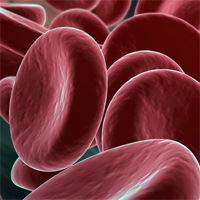Red cell distribution width is a potential predictor of early relapse in polymyalgia rheumatica

All claims expressed in this article are solely those of the authors and do not necessarily represent those of their affiliated organizations, or those of the publisher, the editors and the reviewers. Any product that may be evaluated in this article or claim that may be made by its manufacturer is not guaranteed or endorsed by the publisher.
Authors
Red blood cell distribution width (RDW) has been studied as a prognostic biomarker for different chronic inflammatory diseases. In this paper we aim to evaluate its potential role in the prediction of early relapse in patients affected by polymyalgia rheumatica (PMR). We revised retrospectively clinical records of patients who received a diagnosis of PMR, according to 2012 ACR/EULAR classification criteria, for whom baseline clinical and laboratory data were available. The baseline RDW variation coefficient was correlated to the risk of relapse, in the first 6 months of the disease. We identified 44 patients [females 15 (34.0%)/males 29 (66.0%); median age 80 (72-83)], 9 of whom had an early relapse. These patients showed a larger median RDW than patients who did not relapse [13.7 (13.5-14.9)% vs 13.5 (12.7-14.2)%; p=0.04). The two groups were comparable for all the other clinical and laboratory parameters considered. Interestingly, patients in the higher half of the RDW distribution showed a shorter relapse-free survival (p<0.03). In a stepwise logistic regression, RDW (p=0.01) predicted the risk of relapse at 6 months, while age, gender, CRP, ESR, Hb, MCV and prednisone dose did not fit the model. Our results show that RDW is an independent biomarker of early relapse, making this parameter a potentially promising predictive marker in PMR.
How to Cite
PAGEPress has chosen to apply the Creative Commons Attribution NonCommercial 4.0 International License (CC BY-NC 4.0) to all manuscripts to be published.











